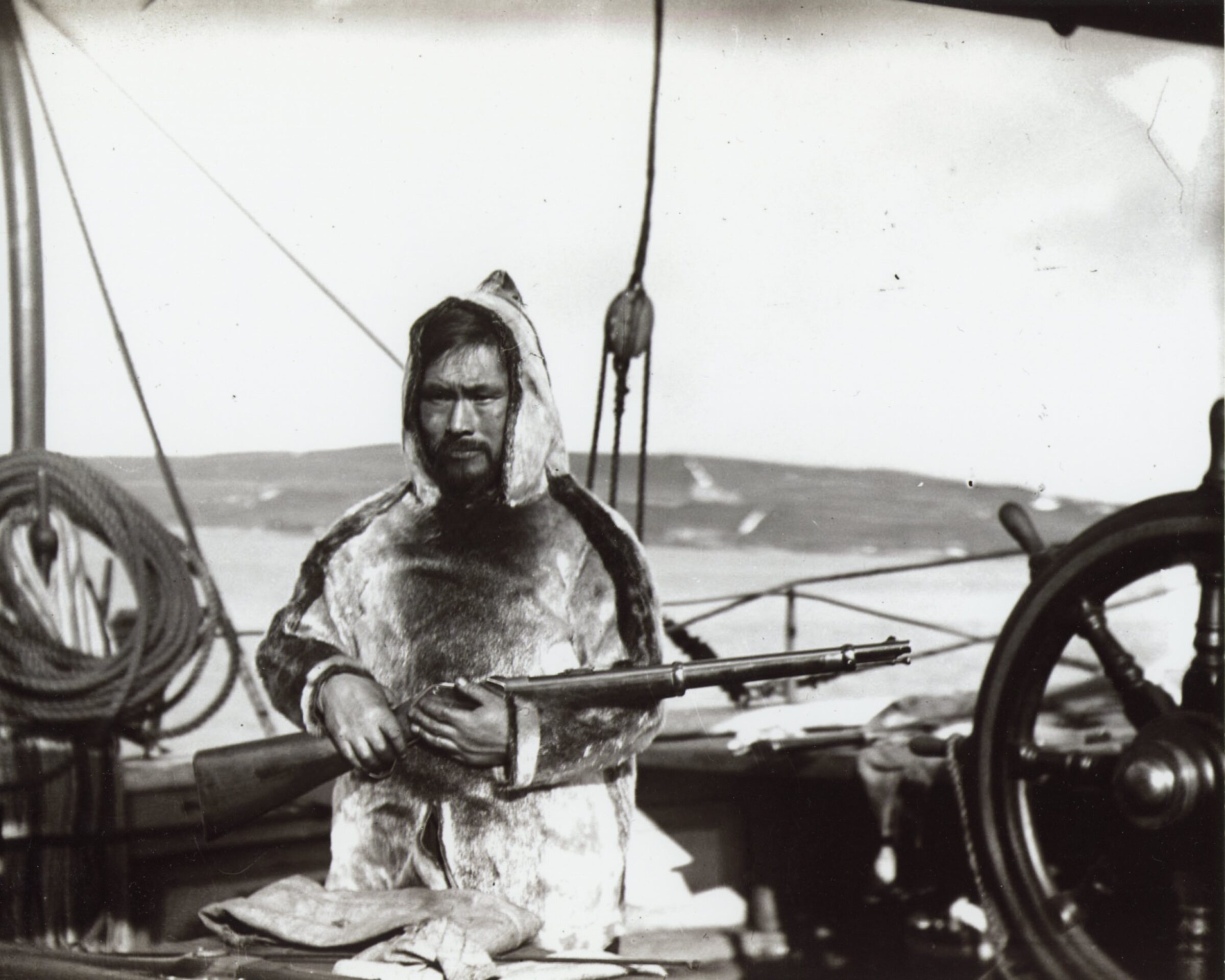Education
Etwango’s Journey Home: A Tale of Friendship and Displacement

In March 1887, Etwango returned to his home after spending five months in Dundee, Scotland, where he learned English and became a familiar figure in the city. Described as a “very quiet and inoffensive man,” his time in Dundee was marked by positive interactions and support from the local community. His friend, Captain William Adams, raised approximately £17 to assist Etwango, enabling him to purchase essential items such as a rifle, a shotgun, and ammunition.
As Etwango prepared to depart, many well-wishers gathered at the docks to bid him farewell. Among the gifts he received were a prayer book from a minister, though he could not read English, and a large quantity of comforters and flannel for his wife from Mrs. Adams. The ship, the Maud, made a stop in Lerwick, Shetland, where Etwango captivated the crowd by showcasing his kayaking skills in traditional attire. The local newspaper referred to him as “the Eskimo chief,” reflecting his impressive demonstrations of native songs and dances that drew an audience of around 2,000 people.
After leaving Shetland, the Maud proceeded to the Davis Strait, where the crew successfully hunted two bowhead whales and several walruses. The journey back was complicated by ice conditions, leading Adams to navigate towards the Baffin coast. During this time, Etwango exhibited signs of melancholy, possibly regretting his return to life as an Inuk after his experiences in Dundee.
Upon arrival at Durban Harbour, Etwango and his shipmates faced challenging ice conditions. They trekked approximately 15 miles over the ice, signaling to the Inuit community. When fellow Inuit arrived to welcome him, Etwango took a moment to return to the ship for a nap. His reunion with his wife was marked by an unemotional handshake, but he was visibly elated to see his daughter. His wife, initially reserved, expressed great joy upon receiving gifts from Dundee, including a melodeon, an instrument that surprised the crew when she played familiar tunes.
As time passed, reports indicated a shift in Etwango’s home life. His wife’s stepmother had moved in, creating tension in their household. Under her influence, his wife left with her to Cumberland Sound while Etwango was away hunting, taking with her many of the gifts he had received. The Dundee Advertiser noted that “the course of true love does not run any smoother among the Esquimaux than it does among more civilized people,” reflecting the emotional turmoil surrounding Etwango’s situation.
Feeling heartbroken, Etwango expressed a desire to return to Dundee on the Maud, but family obligations persuaded him to stay. The following year, Captain Adams was unable to reach Durban Harbour due to ice conditions, and he later passed away, leaving Etwango’s fate uncertain. The records remain silent regarding his future, and the poignant question remains: did he reunite with his wife, or did he return to Cumberland Sound alone?
This narrative highlights the complexities of cultural exchange and personal relationships during a period of significant change. The story of Etwango serves as a reminder of the challenges faced by individuals navigating two worlds, marking a poignant chapter in the history of cross-cultural encounters. Historian Kenn Harper, who has lived in the Arctic for over fifty years, reflects on these events in his ongoing column, Taissumani, which examines historical significance.
-

 Science3 months ago
Science3 months agoToyoake City Proposes Daily Two-Hour Smartphone Use Limit
-

 Top Stories3 months ago
Top Stories3 months agoPedestrian Fatally Injured in Esquimalt Collision on August 14
-

 Health3 months ago
Health3 months agoB.C. Review Reveals Urgent Need for Rare-Disease Drug Reforms
-

 Technology3 months ago
Technology3 months agoDark Adventure Game “Bye Sweet Carole” Set for October Release
-

 World3 months ago
World3 months agoJimmy Lai’s Defense Challenges Charges Under National Security Law
-

 Lifestyle3 months ago
Lifestyle3 months agoVictoria’s Pop-Up Shop Shines Light on B.C.’s Wolf Cull
-

 Technology3 months ago
Technology3 months agoKonami Revives Iconic Metal Gear Solid Delta Ahead of Release
-

 Technology3 months ago
Technology3 months agoApple Expands Self-Service Repair Program to Canada
-

 Technology3 months ago
Technology3 months agoSnapmaker U1 Color 3D Printer Redefines Speed and Sustainability
-

 Technology3 months ago
Technology3 months agoAION Folding Knife: Redefining EDC Design with Premium Materials
-

 Business3 months ago
Business3 months agoGordon Murray Automotive Unveils S1 LM and Le Mans GTR at Monterey
-

 Technology3 months ago
Technology3 months agoSolve Today’s Wordle Challenge: Hints and Answer for August 19









